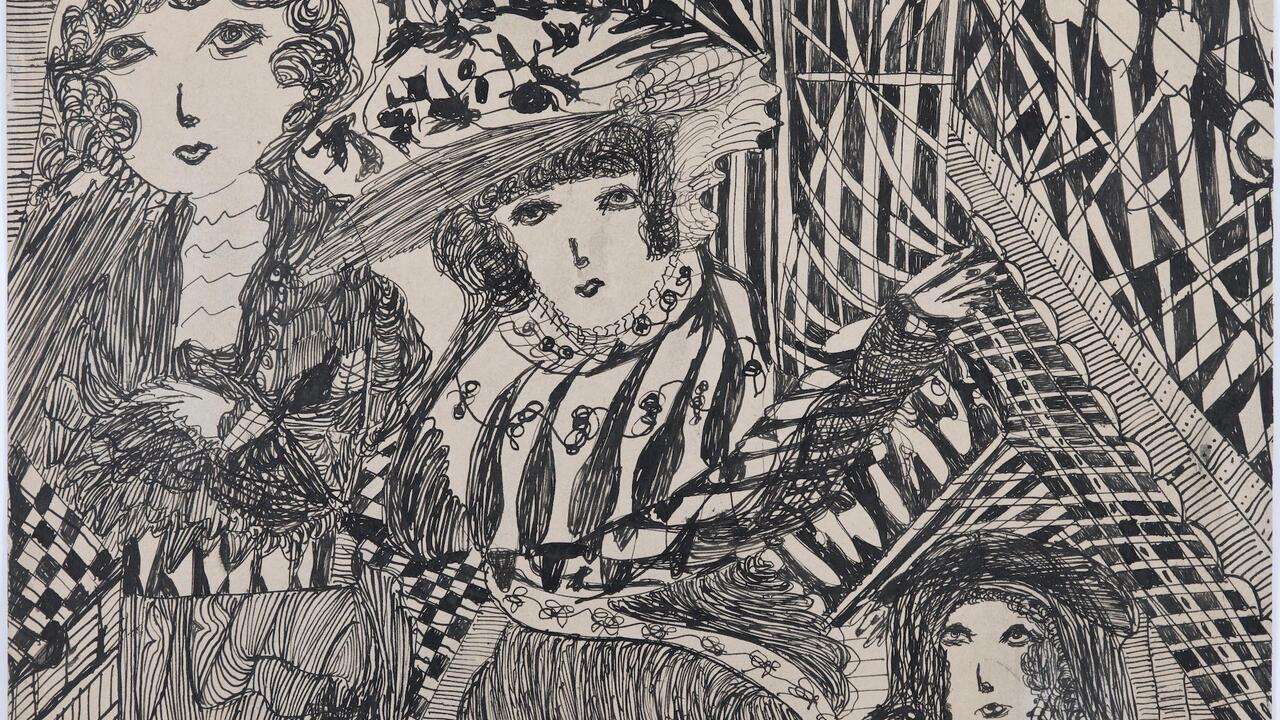Tracing Anita Payró’s Path to Abstract Art
The Argentinian painter, featuring in Spotlight this year, is increasingly revered for her pioneering abstractions that eschewed cultural politics
The Argentinian painter, featuring in Spotlight this year, is increasingly revered for her pioneering abstractions that eschewed cultural politics

For Anita Payró (1897–1980), abstraction was never a point of arrival. Her practice did not dismantle figuration or confront systems of representation through pure invention. Nor did it function as a means of returning to origins – a return to that ancestral geometry of indigenous visual thought that was held up as ideological manna for a brand-new Latin American avant-garde. For Payró, abstraction was the skeleton of the visible and, therefore, the foundation for its representation. Geometry was the formal language inherent in a human body, a gothic cathedral, an Inca wall or the wind. Starting from that belief, her drive was to go further: to seek in the encounter between a circle and a triangle, between harmonious colours and contrasting rhythms, a potential structure that could represent the non-visible – that is to say, human emotions.

Payró was born into a family of intellectuals who emigrated from Argentina to Europe when she had just turned ten. Between 1907 and 1926, they lived in Barcelona, Brussels and London. During her adolescence in Spain she spent time with Joaquín Torres-García, a well-known family friend, and their future practices would both turn to abstraction as a constructive foundation, though in the Uruguayan painter’s work it would be the basis for a universal language, while in the Argentinian’s it would serve as the formal armature of the representation of an inner world. Payró acknowledged her admiration for Torres-García but never cited him as an influence, nor did she enroll in the vast school of followers the Uruguayan cultivated upon his return to Latin America.

Throughout her life, Payró traced the roots of her abstraction to her studies at the École Bischoffsheim in Brussels. At the time, this institution was dedicated to the artistic and professional training of young women, with a focus on the decorative arts and the domestic sphere. Payró would recall a vase decorated with geometric butterflies – and not a painting by Cézanne – as a revelatory and initiatory event for her abstract thinking. While Torres-García would expand his work to a universal and timeless scale by using symbols shared by all humanity, or archaic structures from the pre-Columbian world, Payró would stick to the domestic and personal realms to devote herself to a style of painting that could build up a geometric vocabulary, freed from both old traditions and new manifestos, in order to represent intimate emotional states.
Payró stuck to the domestic and personal realms to build up a geometric vocabulary.
Payró returned to Argentina in 1926, but only had her first solo exhibition in 1951, at the age of 54. Although art history assures us that her painting had been developing for years, she emerged late into the public arena, at the height of the boom in Río de la Plata concrete art and its accompanying heated arguments about the future of art and society; these debates pitted various factions of geometric abstraction – mostly male – against each other. Payró’s path was always a solitary one; its intentions and politics existed on a personal scale. However closely acquainted she was with local and international movements of abstract art, her work never adopted the -isms being moulded in the mid-century, nor did she join any group. Having roots in the decorative arts and exploring the relationship between geometry and emotionality would both have been grounds for expulsion from these groups, which sought to eradicate the expressivity and representation inherent in Western painting traditions.

On her artistic path, Payró never gave up the ambition of developing a language capable of exploring the relationship between human emotions and abstraction. Her work constructs spaces of personal projection: a political intuition that would grow in subsequent decades, with the ideological relevance of feminist micropolitics and the LGBTQI+ vanguard in Argentina. Many artists of this new generation disentangled and appropriated the grand narratives of Río de la Plata concrete art, countering its claims to universalism through their focus on the domestic and affective spheres. The relevance of Payró’s work continues today, as we seek diverse models of reconnection with sensitivity in a world enthralled by virtual, economic and political abstraction.
Selected works by Anita Payró are on view in the Spotlight section, exhibited by Herlitzka & Co. on Stand S11.
Further Information
Frieze London and Frieze Masters, 9 – 13 October 2024, The Regent’s Park.
Limited early bird tickets are on sale – don’t miss out, buy yours now. Alternatively, become a member to enjoy premier access, exclusive guided tours and more.
To keep up to date on all the latest news from Frieze, sign up to the newsletter at frieze.com, and follow @friezeofficial on Instagram, X and Frieze Official on Facebook.
Main image: Anita Payró, Viaje I (Travel I), 1970, oil on canvas, 43 × 123 cm. Courtesy: Herlitzka & Co., Buenos Aires
























